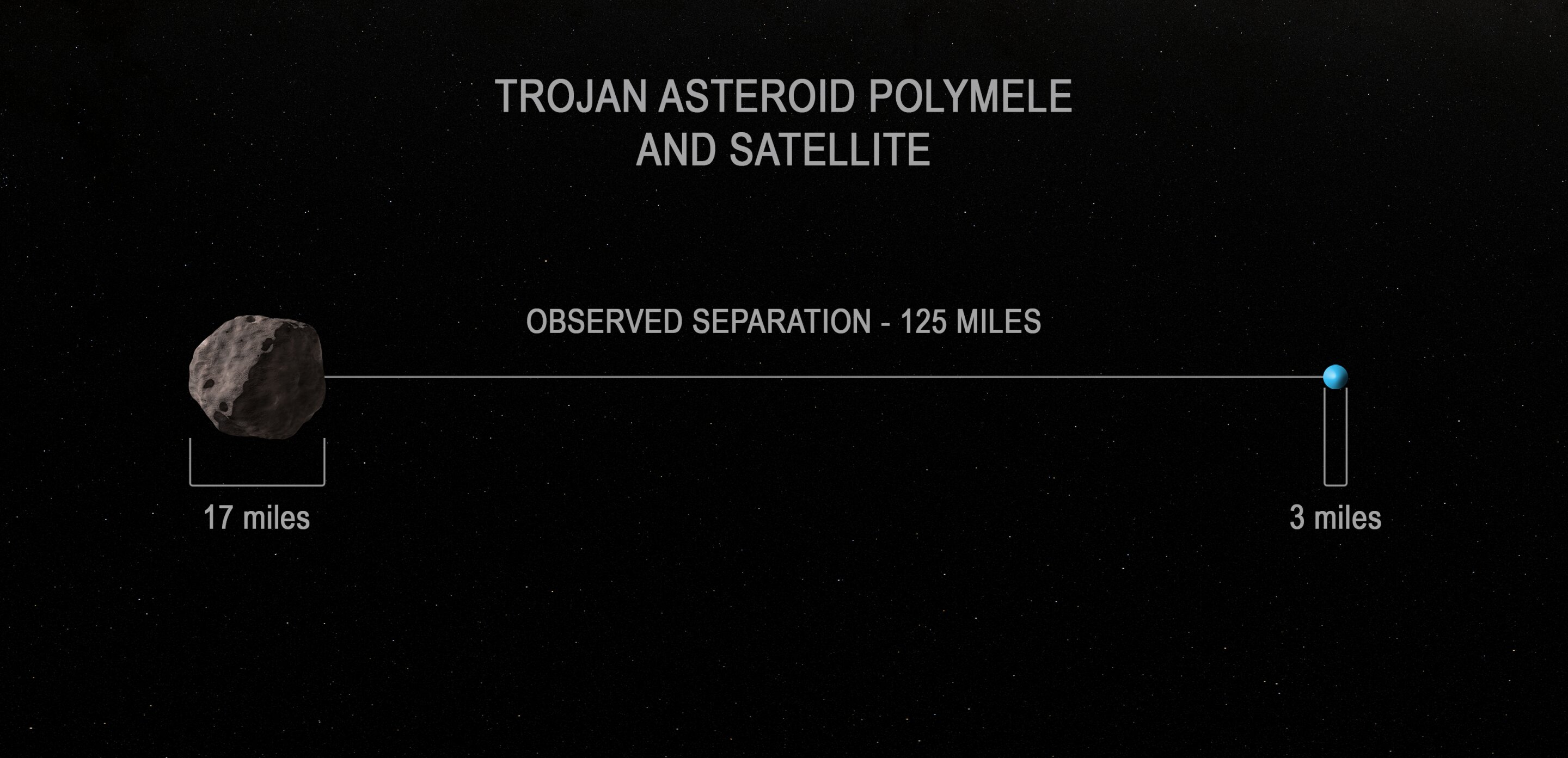In the spring of 2022, on March 27, the science team of NASA's Lucy mission discovered a satellite near the asteroid Polymela. This
“A total of 14 teams reportedabout observing the twinkling of a star when an asteroid passed in front of it. But when we analyzed the data, two observations turned out to be different from the others, explains Mark Buie, head of the Lucy Research Unit at the Southwest Research Institute. — Two astronomers discovered an object about 200 km from Polymela. Looks like it was a satellite."
 Graph showing the observed separation of the asteroid Polymela from its discovered moon.
Graph showing the observed separation of the asteroid Polymela from its discovered moon.
Credit: NASA Goddard Space Flight Center
Using transit data, scientists realized thatThe satellite is approximately 5 km in diameter and orbits Polymela. The diameter of the asteroid is 27 km along its widest axis. The observed distance between the two bodies was about 200 km. Under international agreement, the satellite will not be given an official name until researchers determine its exact orbit.
 Using data from the eclipse, scientists estimated the diameter of the asteroid's moon Polymela.
Using data from the eclipse, scientists estimated the diameter of the asteroid's moon Polymela.
Credit: NASA Goddard Space Flight Center
The satellite is too close to Polymela,so that it can be clearly observed in ground-based or near-Earth telescopes - without the help of a background star. Therefore, when it will be named is unknown. This may not happen until 2027. That's when "Lucy" will approach the asteroid. At the time of observation, it was located at a distance of 770 million km from the Earth.
Read more:
"James Webb" sent a photo of the collision of two huge galaxies
"Useless" bacteria on Earth will provide life to the colonists of Mars
On the pyramid in China found a portrait of the "king of ancestors". He ruled over 4,000 years ago